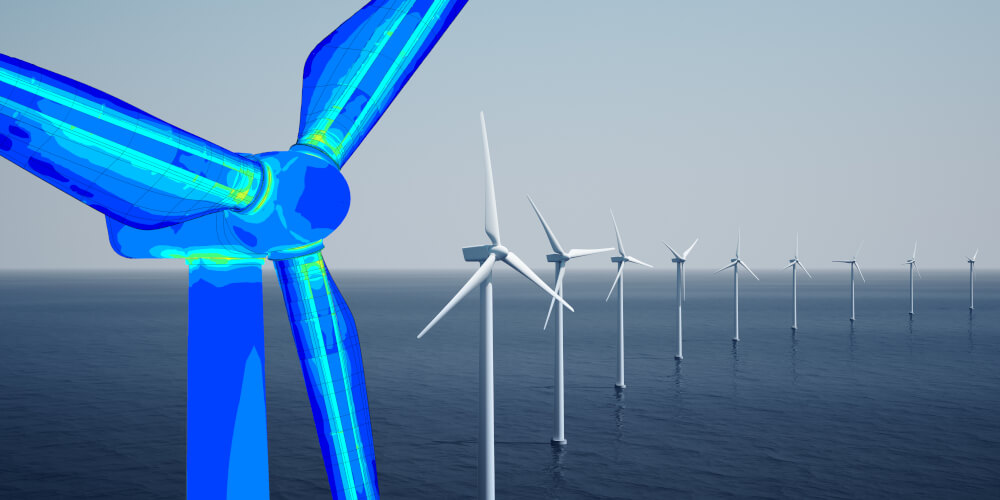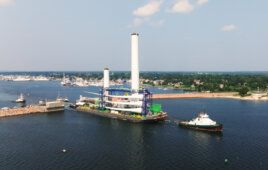By Guillaume Lechaton, Sales Director for Wind and New Energies, Akselos
Offshore wind is going from strength to strength. 2021 was a record year for the industry, with almost 21 GW of capacity added globally, up from 6.1 GW in 2020. Total offshore wind capacity is now at 57 GW and is expected to reach 630 GW by 2050.
For the fourth year in a row, China led the world for offshore wind installations in 2022, adding almost 17 GW. During the same period, Europe’s capacity grew by 3.1 GW, and the continent pledged to increase its capacity to 150 GW by 2050 as part of the REPowerEU Action Plan. The United States added no new offshore turbines in 2022 but identified 700,00 acres of potential offshore wind development in the Gulf of Mexico.
Offshore wind has a critical role to play in the transition to a clean energy economy. To hit the International Energy Agency (IEA) target of net-zero global emissions by 2050, 80 GW of new capacity must be built annually from now until 2050. Therefore, while impressive, current growth rates are insufficient, and we need to add capacity at an unprecedented speed and scale to hit net zero.
The positive news is that the industry has the potential to hit and even surpass net-zero targets. According to the IEA, it could generate more than 18-times today’s global electricity demand. In the United States, offshore wind has the potential to provide more than 2,000 GW of energy – two-times the current generation of the entire grid.
Barriers to growth
 With its enormous global potential, the offshore wind industry should be leading the charge to hit the IEA’s net-zero 2050 target. Unfortunately, it is being held back by barriers to growth that are preventing it from reaching its full potential.
With its enormous global potential, the offshore wind industry should be leading the charge to hit the IEA’s net-zero 2050 target. Unfortunately, it is being held back by barriers to growth that are preventing it from reaching its full potential.
For example, permitting is a slow and cumbersome process. As a result, wind farms currently take around 11 years to move from lease to installation. By the time engineers install turbines, the industry has developed superior technology, and the installed turbines are outdated.
The offshore wind industry also relies on expensive raw materials for construction, such as copper, iron and steel. The price of these raw materials is soaring. Globally, the cost of steel has risen by 215%, while global iron and copper prices rose by around 50% last year. Such steep increases have been driven in part by the war in Ukraine driving up the cost of raw materials, especially since Russia and Ukraine are significant producers of steel.
Engineering simulation technology offers an innovative solution
The offshore wind industry can overcome barriers to growth by embracing engineering simulation software. Using simulation software, engineers can create detailed models of wind turbines to analyze performance under different conditions. These models can lead to lower costs, shorter time frames to design and build turbines, and increased renewable energy adoption. Savings achieved by improved designs can be re-allocated to different areas of the supply chain, creating more profit.
For example, in a recent project, Akselos modeled offshore wind jacket foundations to identify specific stress hotspots for optimization. The modeling results showed that the software could reduce the steel weight of offshore wind jacket foundations by up to 20% while meeting the exact design requirements and without impacting the scale of wind generation output.
The reduction in steel weight achieved is significant as it could help the industry overcome its two main barriers to growth. Using less steel offsets the high cost of the raw material, bringing down the price of the technology and increasing deployment. Also, the fewer raw materials required, the quicker a turbine can be built, which somewhat reduces the time necessary to get a turbine from conception to installation.
Global implications
From a global perspective, the results of this project could have far-reaching implications. As many in the wind industry believe, bigger turbines are not automatically better. Leaner designs removing unnecessary weight are superior as they use less raw materials, speeding up the building process and increasing adoption.
Moreover, if simulation software can significantly reduce the weight of offshore jackets, there is room for improvements elsewhere. Engineers could use simulation software to optimize more wind turbine components — such as the tower and rotor blades — to find other inefficiencies and reduce costs.
Finally, by creating more efficient turbine designs and lowering prices, simulation software can help us overcome two further fundamental challenges of our time: energy security and affordability. Engineering simulation software lowering the cost of renewable energy and increasing its adoption help diversify countries’ energy mix and reduce the reliance on fossil fuel exports. This diversification is crucial as Russia is threatening to cut off European gas supplies, and there is a growing requirement to incorporate renewable energy into the electrical grid. Lower renewable energy costs can also help ease the global cost of living crisis that we are currently facing.
A solid base to build on
Offshore wind is in a strong position, with capacity increasing globally and plans to expand. However, the industry is falling short of its net-zero targets and must grow quickly to help avoid the worst of climate change. Offshore wind has enormous potential to grow at the speed and scale required to achieve net-zero emissions by 2050. Combining this potential with engineering simulation software could drive the industry towards net-zero while increasing energy security and affordability.
 Guillaume Lechaton is Akselos’ Sales Director for Wind and New Energies, driving global sales and business development in the offshore wind industry. Guillaume has over 11 years of experience in the wind industry, having worked for a world-leading asset owner and a top three wind turbine manufacturer.
Guillaume Lechaton is Akselos’ Sales Director for Wind and New Energies, driving global sales and business development in the offshore wind industry. Guillaume has over 11 years of experience in the wind industry, having worked for a world-leading asset owner and a top three wind turbine manufacturer.
Filed Under: Featured






